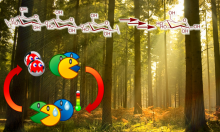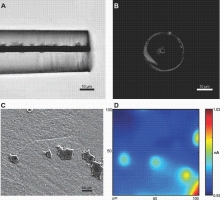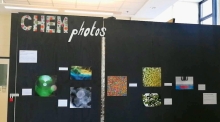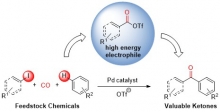Cellulose, one of the three major components of plants, is showing great promise as a renewable source for many convenience products. It is made of glucose, a molecule which can be fermented by microorganisms into virtually any desired small molecule of interest. More especially it can be converted to ethanol to make sustainable biofuels.


The way individual atoms and molecules move in materials has important consequences on properties such as electrical conductivity, heat capacity and acoustics. Even in solids, atoms are always moving back and forth about some average position, and this motion occurs through specific wave-like modes called phonons. Phonons form elementary excitations in the material and can therefore carry energy in the form of heat. As temperature increases, so do the number of phonons and vice-versa. The group of Dr.


McGill University researchers have discovered the consequence of adding titanium and other stabilizing agents to high performing stainless steel on the material’s localized corrosion mechanism.
In a study published in npj Materials Degradation, the researchers describe a suite of electrochemical techniques used to characterize the material’s corrosion properties both on the macro and micro scale.

The first edition of the ChemPhoto: McGill Department of Chemistry Photo Exhibition took place in February and March 2018. The winners were selected by popular vote (total votes: 266) and are:
- 1st place: Le Jaune et le Bleu by Chenghao Liu, Ehsan Hamzehpoor
- 2nd place: Painter Palette by Mahdi Roohnikan
- 3rd place: Holy smokes Batman, is this Kryptonite!? by Igor Huskić
The award ceremony took place during the bagel hour on March 29th.

Two Kavli Lectures are held at every ACS national meeting as the result of collaboration between ACS and The Kavli Foundation, an internationally recognized philanthropic organization known for its support of basic scientific innovation in astrophysics, nanoscience, neuroscience, and theoretical physics.

The Royal Society of Chemistry Twitter Poster Conferences are the biggest chemistry conferences ever organized as they are held entirely over Twitter. Chemists are invited to join this online conference by tweeting they poster, allowing people all over the word to share they research and engage with the scientific research community, without having to travel!

Researchers at McGill University have invented a new technique for measuring how quickly drugs interact with their molecular targets. The discovery provides scientists with a new way to investigate the effectiveness of drug candidates that might otherwise have been overlooked.
The new method centres on the principle of enzyme inhibition. Countless pharmaceuticals, ranging from antibiotics to chemotherapy drugs, work by blocking the action of enzymes, and the search for new enzyme-inhibiting substances remains a major focus of drug development.

Congratulations to Hanadi Sleiman and CJ Li for securing major Canadian Society for Chemistry awards
In 2018, Hanadi Sleiman will receive the R.U. Lemieux Award and CJ Li the Alfred Bader Award.
These awards will be presented to them during the 101st Canadian Chemistry Conference and Exhibition which is taking place in Edmonton from May 27-31, 2018.

The McGill Chemistry Outreach is proud to launch the first “ChemPhoto”, a photo exhibition of chemistry to coincide with Nuit Blanche on March 3 2018. The chemistry-themed photo exhibition is open to students and staff in the Department of Chemistry at McGill University. The purpose of the exhibition is to showcase the beauty of science and to foster interest in chemistry to the general public.
Who can participate: undergraduate students, graduate students, postdocs and staff in the McGill Department of Chemistry.

Richard Lincoln in the Cosa group received the 2017 Gerhard Closs Award from the Inter-American Photochemical Society in Florida in the New Year, where he gave an award lecture entitled “Lighting and Enlightening the Chemistry of the Cell”. This award was set in remembrance of Professor Gerhard L. Closs by the Inter-American Photochemical Society to reward contributions from graduate and undergraduate students for oral presentation at the I-APS Winter Conference on any subject involving photochemistry. Congratulations Richard!

Researchers at McGill University have discovered a new, more environmentally friendly way to make ketones, an important chemical ingredient in pharmaceuticals. While ketones are found in a wide range of useful chemicals, they are commonly prepared through energy-intensive, multi-step technologies that create significant chemical waste. In an article published online last month in Nature Chemistry, the McGill scientists demonstrate how carbon monoxide, a widely available by-product of combustion, can instead be used to form high-energy chemicals that react directly with benzene to

Mechanochemical method makes noble metal compounds without solvents or harsh reagents. Read more in Chemical & Engineering News, the magazine of the American Chemical Society.

McGill University researchers have chemically imprinted polymer particles with DNA strands – a technique that could lead to new materials for applications ranging from biomedicine to the promising field of “soft robotics.”
In a study published in Nature Chemistry, the researchers describe a method to create asymmetrical polymer particles that bind together in a spatially defined manner, the way that atoms come together to make molecules.
